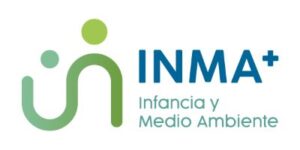Search
Ordizia (Ayuntamiento de Ordizia)
The fieldwork for the TV3 Marathon begins!
Fieldwork to collect ultrasound data for the Marató TV3 project entitled “Impact of the Environment (Exposome) on Sexual and Reproductive Health in a National Multicenter Birth Cohort” has begun!!!!! We’ve already collected 95 ultrasounds without any incidents. FANTASTIC Thank you all very much for your participation!
NEW TITLE Scientific Conference 2025. Social Inequalities, Environment and Health
Hi, We announce the organization of the Social Inequalities, Environment and Health Scientific Conference 2025 Days: 25 and 26 of November, 2025 Preliminary programme: Link Reserve these dates! We will wait for you! Collaborators:
we have decided to include social inequalities as relevant topic in the next Scientific Conference 2025. This is why this conference is no longer called 20th INMA Scientific Conference 2025 and renamed as Social Inequalities, Environment and Health Scientific Conference 2025. The conference will present all the INMA work we have under development (sure!), but will also present work from other research projects.
Place: Donostia-San Sebastián
NOTE: In parallel to this programme, meetings between researchers/research groups may be scheduled to assess potential collaborations. If you are interested, please send an e-mail to susana.gros@isglobal.org
Worldwide trends in diabetes prevalence and treatment from 1990 to 2022: a pooled analysis of 1108 population-representative studies with 141 million participants
NCD Risk Factor Collaboration (NCD-RisC). Worldwide trends in diabetes prevalence and treatment from 1990 to 2022: a pooled analysis of 1108 population-representative studies with 141 million participants. Lancet. 2024 Nov 23;404(10467):2077-2093. PMID: 39549716
Worldwide trends in underweight and obesity from 1990 to 2022: a pooled analysis of 3663 population-representative studies with 222 million children, adolescents, and adults
NCD Risk Factor Collaboration (NCD-RisC). Worldwide trends in underweight and obesity from 1990 to 2022: a pooled analysis of 3663 population-representative studies with 222 million children, adolescents, and adults. Lancet. 2024 Mar 16;403(10431):1027-1050. PMID: 38432237
Early childcare arrangements and children’s internalizing and externalizing symptoms: an individual participant data meta-analysis of six prospective birth cohorts in Europe
Barry KM, Avraam D, Cadman T, Elhakeem A, El Marroun H, Jansen PW, Nybo-Andersen AM, Strandberg-Larsen K, Safont LG, Soler-Blasco R, Barreto-Zarza F, Julvez J, Vrijheid M, Heude B, Charles MA, Gomajee AR, Melchior M. Early childcare arrangements and children’s internalizing and externalizing symptoms: an individual participant data meta-analysis of six prospective birth cohorts in Europe. Lancet Reg Health Eur. 2024 Aug 21;45:101036. PMID: 39262448
Socioeconomic position during pregnancy and pre-school exposome in children from eight European birth cohort studies
Pizzi C, Moirano G, Moccia C, Maule M, D’Errico A, Vrijheid M, Cadman TJ, Fossati S, Nieuwenhuijsen M, Beneito A, Calas L, Duijts L, Elhakeem A, Harris JR, Heude B, Jaddoe V, Lawlor DA, Lioret S, McEachan RR, Nader JL, Pedersen M, Pinot de Moira A, Strandberg-Larsen K, Subiza-Pérez M, Vafeiadi M, Welten M, Wright J, Yang TC, Richiardi L. Socioeconomic position during pregnancy and pre-school exposome in children from eight European birth cohort studies. Soc Sci Med. 2024 Oct;359:117275. PMID: 39236481
Urban environment exposures, energy balance-related behaviors and their combination in preschoolers from three European countries
Descarpentrie A, Dargent-Molina P, Arregi A, Carrasco P, Estarlich M, Guxens M, McEachan R, Nieuwenhuijsen M, Subiza-Pérez M, Wright J, Charles MA, Heude B, Vrijheid M, Lioret S. Urban environment exposures, energy balance-related behaviors and their combination in preschoolers from three European countries. Environ Int. 2024 Aug;190:108880. PMID: 39024825
The association of Helicobacter pylori with adverse pregnancy outcomes in three European birth cohorts
Galan R, Pembrey L, Bustamante M, Aguilar R, Mason D, Vidal M, Bañuls M, Roumeliotaki T, Delgado-Saborit JM, Marin N, Vrijheid M, Bempi V, Moncunill G, Dobaño C, Kogevinas M, Karachaliou M. The association of Helicobacter pylori with adverse pregnancy outcomes in three European birth cohorts. BMC Pregnancy Childbirth. 2024 Nov 12;24(1):745. PMID: 39533217
Early life exposure to mercury and relationships with telomere length and mitochondrial DNA content in European children
Lozano M, McEachan RRC, Wright J, Yang TC, Dow C, Kadawathagedara M, Lepeule J, Bustamante M, Maitre L, Vrijheid M, Brantsæter AL, Meltzer HM, Bempi V, Roumeliotaki T, Thomsen C, Nawrot T, Broberg K, Llop S. Early life exposure to mercury and relationships with telomere length and mitochondrial DNA content in European children. Sci Total Environ. 2024 Jul 1;932:173014. PMID: 38729362.
1 / 128





